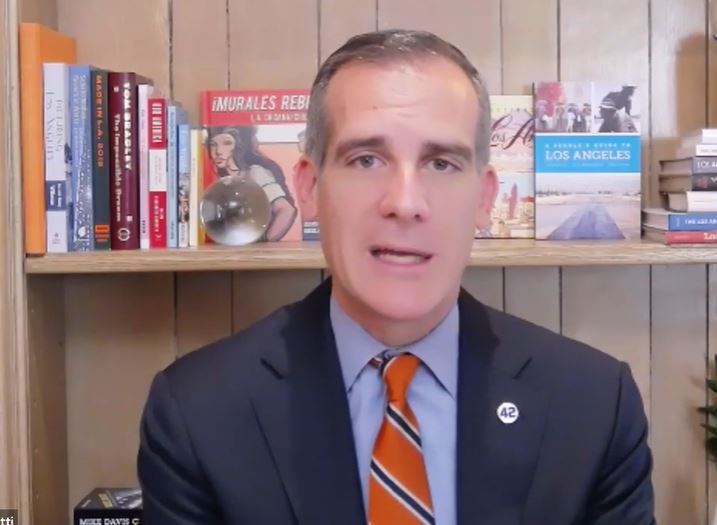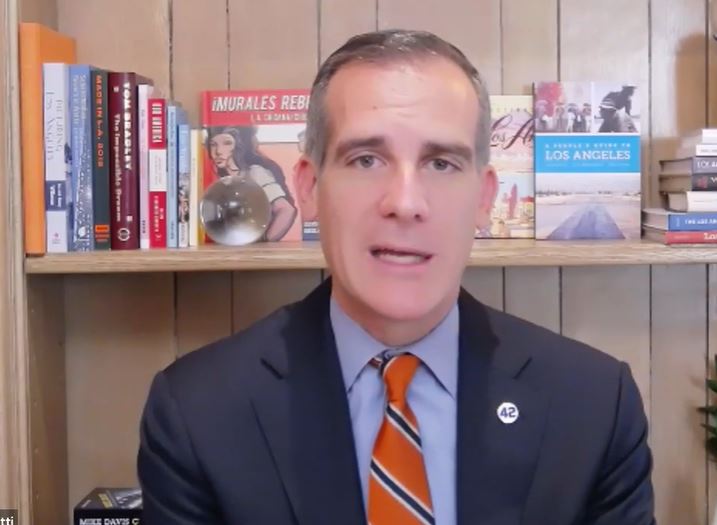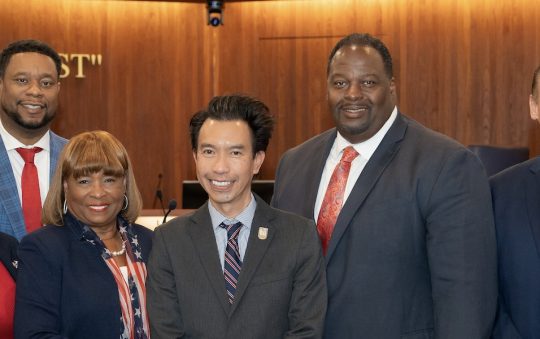
Mayor Eric Garcetti today began his term as Chair of the Los Angeles County Metropolitan Transportation Authority (Metro) Board of Directors, his third term in this post. He succeeds outgoing Chair and Inglewood Mayor James T. Butts, Jr.
“This is a moment not only to consider what’s possible on our roads and rail lines — it’s a time to reimagine how our transportation network can help deliver sustainability, equity, prosperity, and a better quality of life to all Angelenos,” said Los Angeles Mayor and Metro Board Chair Eric Garcetti. “Metro will be a strong force for positive change — a system where we lead on electrification, push forward on congestion relief, inject racial justice into every decision, clean our air, create jobs, and connect our communities.”
Mayor Garcetti will take a consensus-based approach as Chair of the Metro Board, where local voices are empowered and taxpayer dollars are spent responsibly. His upcoming term will focus on three core priorities:
Achieve Transportation Equity: Mayor Garcetti is committed to leveraging Metro’s resources to advance racial justice and economic opportunity for L.A. County residents by restructuring the bus system through the NextGen Bus Plan; lowering fares; providing workforce development programs and pipelines to employment; making transformative investments in historically underserved communities; and maximizing opportunity for minority and women-owned businesses.
Pursue Climate Action: Passenger vehicles are the largest source of greenhouse gas emissions in California — over three times more than the next biggest source. To take bold steps to reduce Vehicle Miles Traveled and greenhouse gas emissions, Mayor Garcetti will help lead Metro to attract new riders; electrify its bus fleet; develop a congestion pricing program; incentivize affordable housing; and build transit-oriented communities.
Reimagine the Future: Propelled by the momentum created by Measure R and Measure M, Mayor Garcetti will support Metro’s work to accelerate project timelines and make projects shovel-ready; develop and deploy new mobility options; utilize and leverage public-private partnerships; and harness the L.A. area’s innovative and creative spirit to incorporate the latest technology in Metro’s work.
“Metro will be faced with unprecedented challenges and opportunities in the coming fiscal year. I have great confidence in Mayor Garcetti to help us steer our way through this unique time in our agency’s history,” said Metro CEO Phillip A. Washington. “Mayor Garcetti is a true humanitarian who strives to improve the lives of Angelenos in every way possible. His term as Chair of our Board will complement our own agency efforts to provide the best transportation system for all L.A. County residents.”
In 2016, Mayor Garcetti led the coalition to pass Measure M — and more than 71% of voters in L.A. County backed his vision to invest $120 billion in expanding our transit system, fixing streets and freeways, and putting more than 777,800 people to work over the next 40 years.
Since 2013, Metro has broken ground on four transportation mega-projects under the watch of Mayor Garcetti, including:
-
Crenshaw/LAX Line, a 8.5-mile light rail line that will improve mobility in South Los Angeles and transform the way Angelenos and visitors access LAX.
-
Regional Connector, which will tie Metro’s light rail lines together through Downtown Los Angeles, allowing for a one-seat ride from the Eastside to the beach.
-
Purple Line Extension, an underground subway on the Wilshire Blvd. corridor that will allow riders to travel between downtown Los Angeles and Westwood in 25 minutes.
-
Gold Line Foothill Extension Phase 2B, continuing the Gold Line 12 miles east from Azusa to Montclair.
When Mayor Garcetti and Los Angeles won the bid for the 2028 Olympic Games, Metro adopted his 28 by ’28 initiative, a plan to harness the unifying power of the Olympic Movement to accelerate L.A.’s transportation future and leverage Measure M to complete 28 key transportation projects in time for the Games.
Mayor Garcetti has also led the way to creating the largest clean-air bus fleet in the nation. He directed Metro to develop plans to convert to a 100% zero-emissions bus fleet by 2030, and he has moved on a bold set of goals — including a fully zero-emissions conversion of the Orange Line by 2020.







